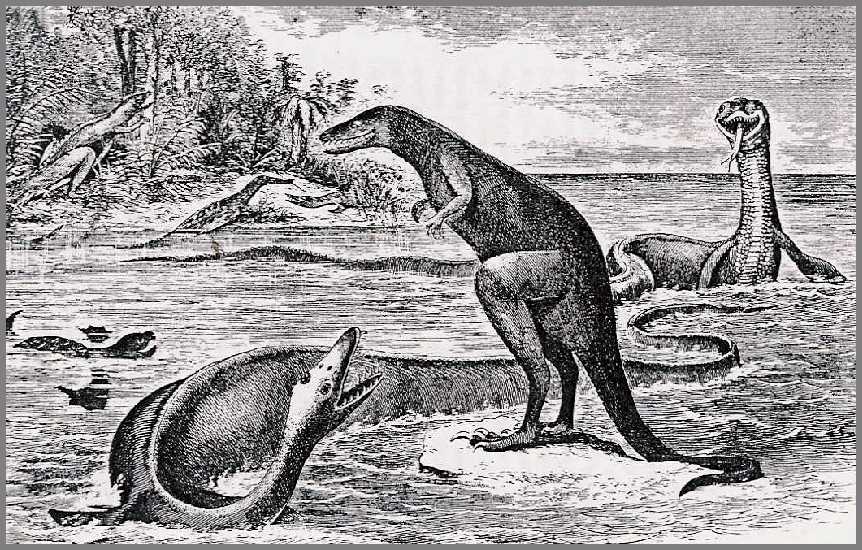

Cope, E. D. 1869. [Remarks on extinct reptiles].
Proceedings of the Academy of Natural Sciences of Philadelphia 20:313.
(meeting of Dec. 1, 1868)
Wherein Cope names a new species of plesiosaur, which he called Elasmosaurus orientalis, from a single vertebrae found near Swedesboro, New Jersey. It is this elasmosaur which is featured in a plate (above) published in the American Naturalist in 1870. In the article, Cope explains, "In the plate accompanying this article, the artist has attempted an ideal representation of a few of the subjects which haunted the shores of our country, when our prairies were the ocean bottom, and our southern and eastern shores were beneath the Atlantic. Lælaps aquilunguis occupies the foreground on a promontory, where his progress is interrupted by the earnest protest of an Elasmosaurus. Mosasaurus watches at a distance with much curiosity and little good will..."
|
NATURAL SCIENCES OF PHILADELPHIA
313 .... (text removed) Dec. 1st
The President, Dr. Hays, in the Chair Thirty-five members present. The following papers were presented for publication: "Notice of some remains of extinct Insectivora from Dakota." by Dr. J. Leidy. "Observations on Reptiles of the Old World. Art. II." by Edw. D. Cope. "Notes on some points in the structure and habits of the Palæozoic Crinoidea." by F. B. Meek and A. H. Worthen.
Dr Leidy exhibited some specimens of Mica recently received from West- port, Canada, remarkable for he beauty and distinctness of its asterism, produced by minute acicular crystals profusely scattered between the laminæ. The star exhibited twelve rays, exceeding in strength any previously seen by him in varieties of the mineral. Prof. Cope made some observations on some extinct reptiles of interest. One of these, represented by a single sacro-caudal vertebra from Swedesboro, N. J. indicated a second-species of Elasmosaurus. It was of equal size with the corresponding one of the Kansas specimens, but differed in the square and uncontracted form of the centrum, and greater stoutness of the diapophyses. He called it E. orientalis. .... |